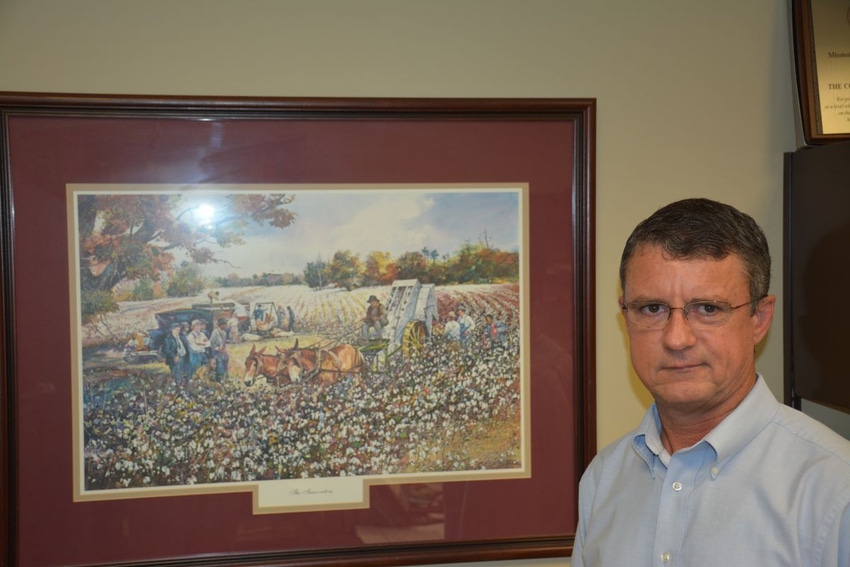
Is focus on banning pesticides hurting efforts to rescue bees?
“EPA has hinted there will be new label language on some products, maybe more so around crops that require pollinator service,” says the National Cotton Council’s Don Parker. “So where you congregate bees in an area they may believe additional protection is needed. “They have also indicated they are looking closely at state pollinator plans such as Mississippi’s and North Dakota’s.”
April 18, 2015

The timing couldn’t have been better for environmental activists groups.
In 2006, the public seemed to be growing weary of repeated, unfounded attacks on pesticides. Donations to organizations that had turned farm chemical-bashing into a cottage industry were declining, and some were laying off employees.
In October of that year, beekeepers began reporting losses of 30 to 90 percent of their hives. According to USDA, it wasn’t the first episode of colony collapse disorder. Scientists had been reporting unexplained losses of bee hives dating back to the 1860s.
But environmental activists seized on one possible explanation – applications of insecticides – for the decline in bee populations and began calling on EPA to ban currently labeled compounds and to stop registering new active ingredients until a thorough investigation could be launched into the losses.
Even today, groups like the Center for Biological Diversity continue to file lawsuits against EPA for registering new, safer insecticides, actions which cause some to question whether such groups are more interested in canceling pesticide registrations or protecting pollinators?
After the initial flurry of excitement, the debate simmered until the winter of 2013. After honeybee populations declined 23 percent, President Obama ordered the creation of a federal task force to be chaired by USDA and EPA last spring. The group’s Federal Pollinator Plan to protect honey bees is due out any day now.
Label changes
While most observers won’t speculate on what the plan’s recommendations might entail, they note EPA has indicated some product labels may change. The agency has also shown interest in a more local approach to the solving the issue.
“EPA has hinted there will be new label language on some products, maybe more so around crops that require pollinator service,” says the National Cotton Council’s Don Parker. “So where you congregate bees in an area they may believe additional protection is needed.

Perspectives of the Mississippi Delta — photos by Rory Doyle
“They have also indicated they are looking closely at state pollinator plans such as Mississippi’s and North Dakota’s,” says Dr. Parker, who is manager of Integrated Pest Management for the Cotton Council.
“In those, all of the stakeholders from a locality have sat down at the table and developed some type of consensus on how they can coexist and minimize impact to each other. We’ve been encouraging all of our states and our producers to move forward with development of some of these state plans because we believe they are a very positive thing. A lot of miscommunication can be cleared up by sitting down together.”
Recent studies at Mid-South land-grant universities have shown that pesticide residues are not nearly as prevalent in plant pollen as environmental activist groups have claimed when they attempted to place the blame for honeybee declines with neonicotinoid insecticides.
Hot off the press, so to speak, is a study by researchers at the University of Maryland published March 18. In three years of trials, the scientists found that – when applied at “realistic” levels; i.e., labeled rates – imidacloprid, a neonicotinoid insecticide, “had negligible effects on colony health and are unlikely a sole cause of colony declines.”
Journal report
The study, which appeared in the online journal PLOS ONE, noted that laboratory and semi-field studies have shown that sublethal effects of imidacloprid can interfere with food collection by affecting the longevity, olfactory learning and orientation functions of foraging bees.
“However, we found no evidence that imidacloprid affected foraging activity during and after exposure in both sublethal experiments,” the study said. “The number of foragers returning and percentage loaded with pollen pellets changed significantly over time in response to seasonal pollen sources but neither treatment nor its interaction with time had a significant effect on these end points.”
A spokesperson for Friends of the Earth, a California-based activist group disagreed with the findings of the study but cited no studies that refute them.

Farming the Arkansas Delta - Photos by Brittney Turner
One of the keys here is field studies versus laboratory studies. Those cited by activists often are laboratory experiments, which do not mimic the conditions found in nature. The studies by the Mid-South university entomologists all were done in the field in their five states. Scientists and research assistants tested pesticide levels in pollen and plant parts at prescribed distances away from the application site.
Longer periods of exposure, particularly to foliar sprays of insecticides, can be problematic for honeybees, which, after all, are insects. But, as the NCC’s Parker noted, several states are working to develop plans to better protect pollinators.
The Mississippi Plan was led by the state’s Farm Bureau Federation. “They pulled in the Mississippi Cooperative Extension Service and the Mississippi Department of Agriculture, and then within the Mississippi Farm Bureau they had multiple commodities represented, and they have a beekeeper section,” he said..
Getting parties together
“So what they were able to do was to put together a meeting where all those stakeholders came to the table. They also invited ag consultants, ag aviators, basically all those that are involved in on-farm applications of crop protection products. It’s basically improving communications and understanding how you can work together to minimize potential exposure of bees.”
Often overlooked in the debate over the impact of insecticides on honeybees is why bees are located in areas where they may be exposed to pesticides. The fact is many farmers allow beekeepers to place hives on their farms. (Unlike almonds, alfalfa and other such crops, cotton and corn are self-pollinating.)
As with any livestock operation, bees need forage, and beekeepers quickly run out of free “grazing” in urban areas. But farmers willing to have hives on their land and beekeepers need to communicate about the best location for the hives.
“The beekeeper wants to locate the hives where it’s easiest for him to load and unload them,” says Parker. “But that may not be ideal from the standpoint of spraying to protect the crops. I know of one farmer who asked the beekeeper to place his hives in a wooded area with trees that helped screen the hives from pesticides.
“It may also be something as simple as facing the openings to the hives away from the nearest fields,” he noted.
The other side of the issue and one that rarely is mentioned by environmental activists is that plants protected by insecticides and fungicides are healthier and provide more abundant forage for bees.
Insecticide treatments
Another facet is that beekeepers spray their hives with insecticides when the hives are being attacked by Varroa mites, small hive beetles or other insect pests that can severely weaken or kill the bees. Like all pesticides, the compounds must be tested and approved by EPA before they can be applied following label directions.
One survey of honeybee colonies, cited in a paper on colony collapse disorder by USDA’s Agricultural Research Service, revealed “no consistent pattern in pesticide levels between healthy and CCD-affected colonies when pollen, bees and beeswax were tested for the presence of 170 pesticides. The most commonly found pesticide in that study was coumaphos, which is used to treat for Varroa mites.” (http://www.ars.usda.gov/News/docs.htm?docid=15572)
Another report that has not received much circulation in activists’ circles is the March 20 USDA National Agricultural Statistics Service report of a 19-percent increase in U.S. honey production in 2014.
NASS analysts said honey production from producers with five or more colonies totaled 178 million pounds in 2014, up from 150 million pounds in 2013. NASS said there were 2.74 million colonies producing honey in 2014, and the yield per colony averaged 65.1 pounds, up from 56.6 pounds in 2013.
Despite the increase in production, honey prices were also up in 2014, reaching a record $2.16 per pound compared to $2.14 per pound in 2013.
There’s no denying the number of honeybee colonies that now exist in the United States is about half the number of colonies that were pollinating flowers and producing honey in the 1940s (2.5 million vs. 5 million).
But most observers believe the answer to preserving and even increasing the 2.5 million colonies is not focusing solely on pesticides to the exclusion of the many other factors that appear to be having an impact on bee health. For more information on Colony Collapse Disorder and declines in bee populations, visit http://en.wikipedia.org/wiki/Colony_collapse_disorder
About the Author(s)
You May Also Like





